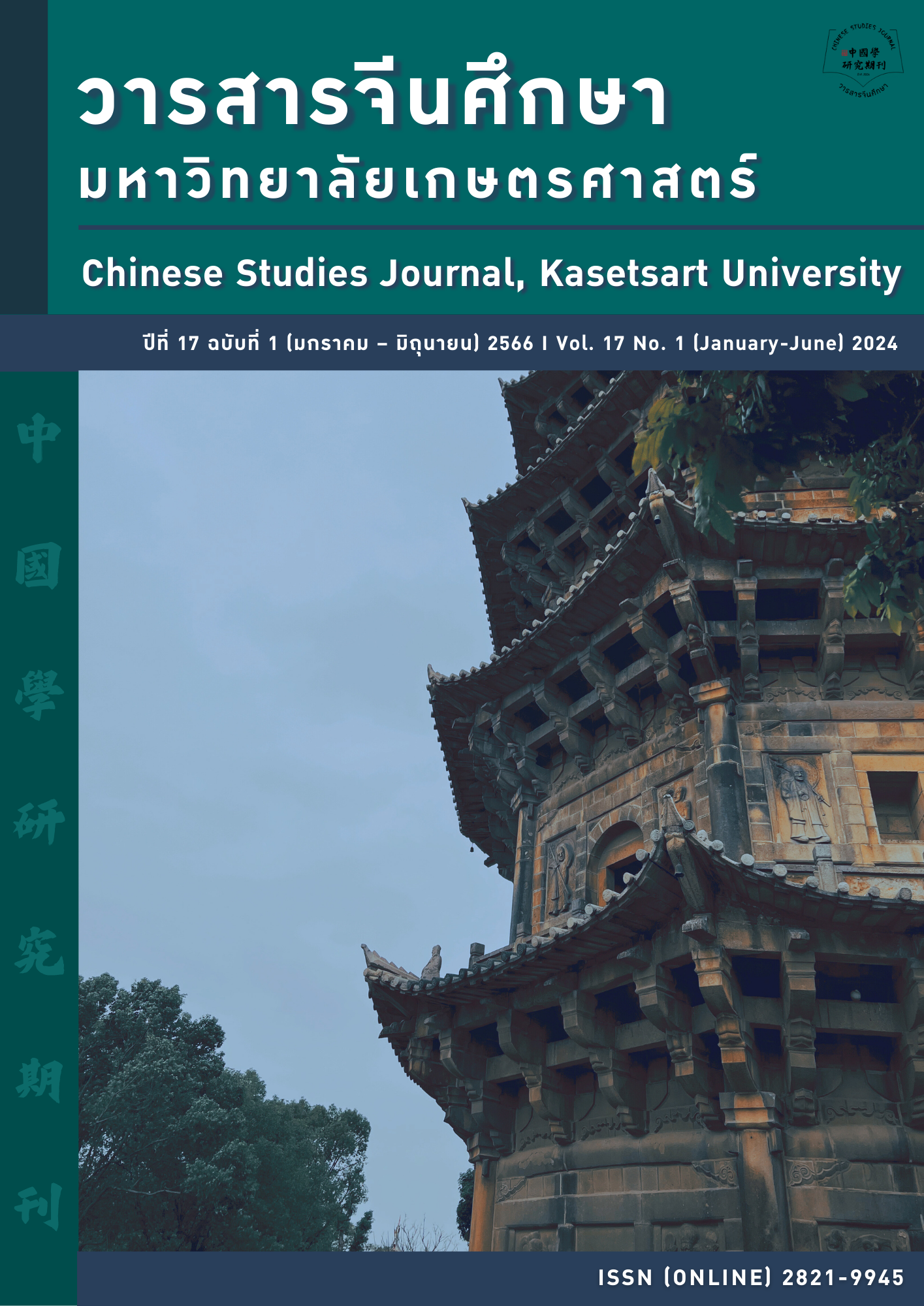The “Chin‐Ho” merchants in trader on the Southern Silk Road Between Lan Na and Yunnan During the 14th-17th century พ่อค้าจีนฮ่อในการค้าบนเส้นทางสายไหมตอนใต้ระหว่างล้านนาและยูนนาน ช่วงคริสต์ศตวรรษที่ 14-16
Main Article Content
Abstract
There is a long history of trade between Lan Na and Yunnan along the Southern Silk Road. The “Chin-Ho” merchants have always played a very important role in this trade process and have been the most dominant group of merchants. The purpose of this paper is to study the characteristics of “Chin-Ho” in the trade between Lan Na and Yunnan along the Southern Silk Road from the 14th to the 17th century. The author finds that (1) “Chin-Ho” were mainly Hui ethnic, (2) they relied on trade caravans, and (3) they mainly used mules and horses as means of transport. “Chin-Ho” with the above characteristics also played an important role in the trade between Lan Na and Yunnan along the Southern Silk Road. They not only contributed to the diversification of goods and the economic development of the two regions, but also served as a link between Yunnan and Lan Na and other regions along the Southern Silk Road. The long-distance trade of the “Chin-Ho” not only connected Yunnan with Lan Na, but also connected the two regions with the mainland trade routes.
Article Details

This work is licensed under a Creative Commons Attribution-NonCommercial-NoDerivatives 4.0 International License.
ผลงานทางวิชาการที่ลงตีพิมพ์ในวารสารจีนศึกษา มหาวิทยาลัยเกษตรศาสตร์ เป็นลิขสิทธิ์ของผู้เขียนหรือผู้แปลผลงานนั้น หากนำลงในวารสารจีนศึกษาเป็นครั้งแรก เจ้าของผลงานสามารถนำไปตีพิมพ์ซ้ำในวารสารหรือหนังสืออื่นได้โดยมิต้องแจ้งให้ทราบล่วงหน้า แต่หากผลงานที่ได้รับพิจารณานำลงในวารสารจีนศึกษา เป็นผลงานที่เคยตีพิมพ์ที่อื่นมาก่อนเจ้าของผลงานต้องจัดการเรื่องปัญหาลิขสิทธิ์กับแหล่งพิมพ์แรกเอง หากเกิดปัญหาทางกฎหมาย ถือว่าไม่อยู่ในความรับผิดชอบของวารสารจีนศึกษา มหาวิทยาลัยเกษตรศาสตร์ ทั้งนี้ ความคิดเห็นต่างๆ ในบทความเป็นความคิดเห็นส่วนตัวของผู้เขียน ไม่เกี่ยวกับกองบรรณาธิการวารสารจีนศึกษา มหาวิทยาลัยเกษตรศาสตร์
References
ภาษาไทย
กฎหมายลานนา ภาคปริววรตลำดับที่ 3. (1975). ภาควิชาสังคมวิทยาและมานุษยวิทยา คณะสังคมศาสตร์ มหาวิทยาลัยเชียงใหม่.
กนกพร นุ่มทอง. (2021). หลักฐานล้านนาในเอกสารโบราณจีน. สาขาวิชาภาษาจีนภาควิชาภาษาตะวันออก คณะมนุษยศาสตร์ มหาวิทยาลัยเกษตรศาสตร์.
ชัยพงษ์ สำเนียง. (2022). เจ้า พ่อค้า ชาวนา นายทุน และเครือข่ายธุรกิจ : การก่อตัวของกลุ่มทุนในประวัติศาสตร์เศรษฐกิจล้านนา (พิมพ์ครั้งที่ 2). สยามปริทัศน์.
ฟิตช์, อาร์. (2013). จดหมายเหตุการณ์เดินทางของราล์ฟ ฟิตช์. กรมศิลปากร.
ลัดดาวัลย์ แซ่เซียว. (2003). 200 ปี พม่าในล้านนา. เทน เมย์ โปรดักชั่น
สรัสวดี อ๋องสกุล. (2023). ประวัติศาสตร์ล้านนา (พิมพ์ครั้งที่ 13). สำนักพิมพ์มหาวิทยาลัยเชียงใหม่ สำนักงานบริหารงานวิจัย มหาวิทยาลัยเชียงใหม่.
ภาษาอังกฤษ
Andrew D. W. Forbes. (1986). The “Čin‐Hō” (Yunnanese Chinese) Muslims of North Thailand. Journal of Institute of Muslim Minority Affairs, 7(1), 173-186.
Holt S. Hallett. (1889). A Thousand Miles on an Elephant in the Shan States. William Blackwood and Sons.
ภาษาจีน
安·马斯克韦尔·希尔(Ann Maxwell Hill).(1985). 泰国北部的中国云南人(陈建明译).东南亚南亚研究,1,58-60.
方国瑜 (主编). (2001). 云南史料丛刊 (第10卷). 云南大学出版社.
胡阳全. (1999). 云南马帮. 福建人民出版社.
蓝勇. (1992). 南方丝绸之路. 重庆大学出版社.
李群,李士斌.(1986). 中国驴、骡发展历史概述. 中国农史,4,60-67.
马可波罗. (2008). 马可波罗行记(冯承钧译). 内蒙古人民出版社.
中央研究院历史语言研究所. (1962). 明实录. 中央研究院历史语言研究所.
木芹. (1982). 云南地方史讲义. 云南人民出版社.
屈小玲.(2011). 中国西南与境外古道:南方丝绸之路及其研究述略.西北民族研究,68(1),172-179.
谢远章 (ยรรยง จิระนคร). (2016). 谢远章学术文选. 云南大学出版社.
何平. (2001). 移居泰国云南人的过去和现在. 收录于 方铁 (主编), 中国西南边疆民族研究 (第1辑). 云南大学出版社.
王明达,张锡禄. (2008). 马帮文化. 云南人民出版社.
姚继德. (2002a). 泰国北部的云南穆斯林—秦和人. 思想战线, 3, 60-63.
姚继德. (2002b). 云南回族马帮的组织与分布. 回族研究, 2, 67-75.


